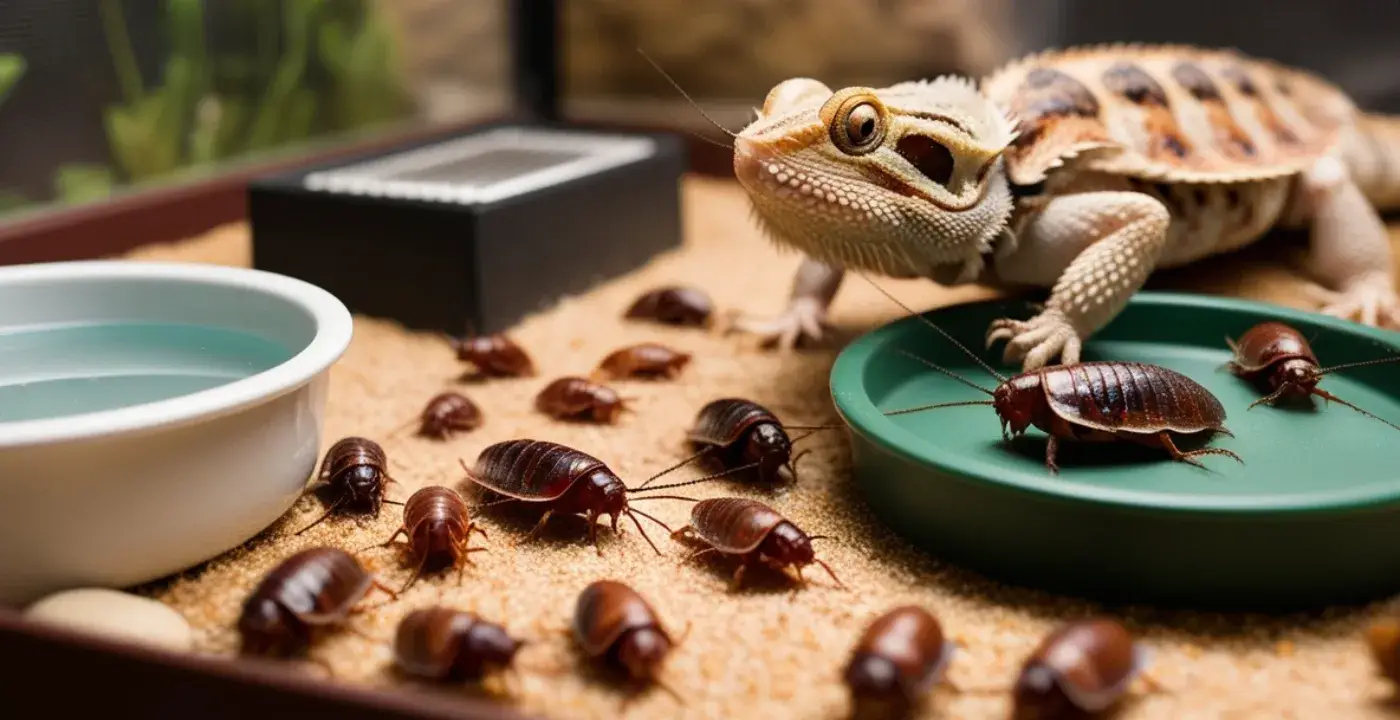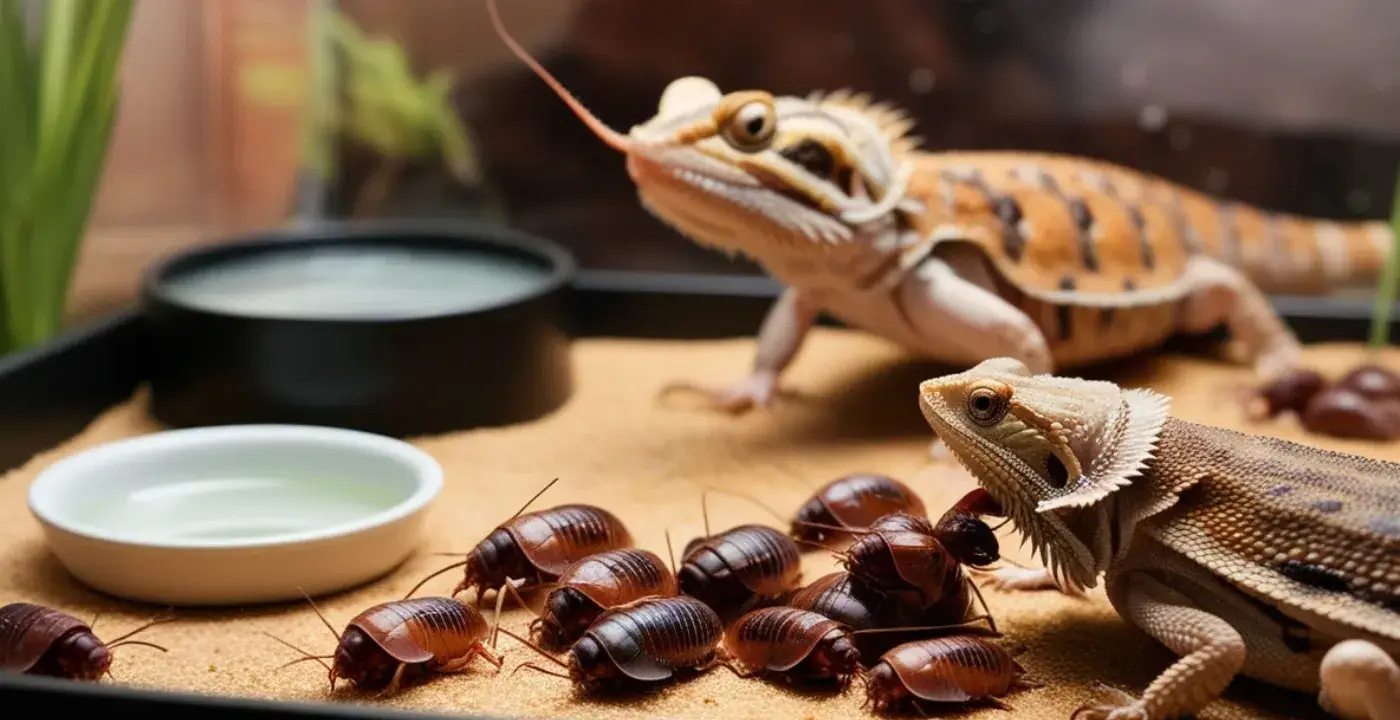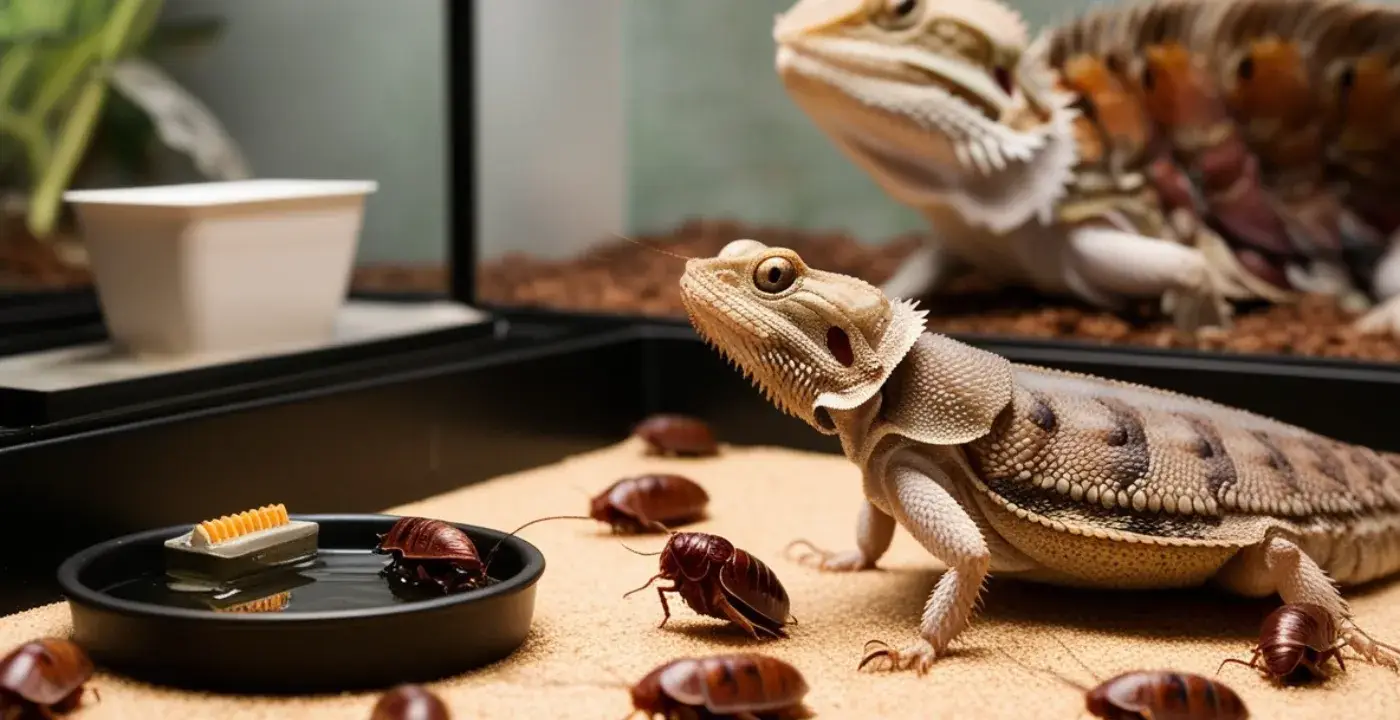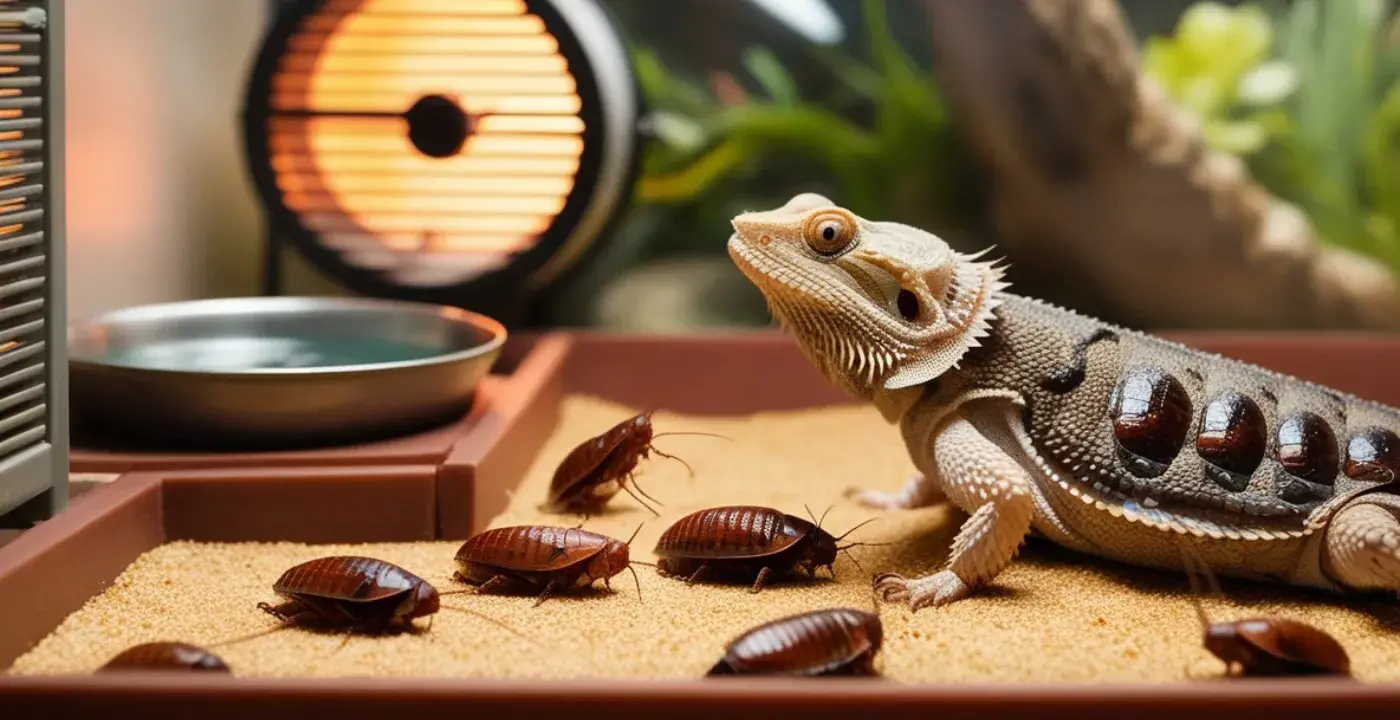If you’re a bearded dragon owner, you’ve likely heard that Dubia roaches are one of the best feeder insects for your scaly friend. But how to keep Dubia roaches for bearded dragons effectively? These nutrient-rich insects are not only a fantastic source of protein but also easy to breed and maintain. In this comprehensive guide, we’ll walk you through everything you need to know about keeping Dubia roaches, from setting up their habitat to ensuring they’re a healthy food source for your pet.
Dubia roaches (Blaptica dubia) are a popular choice among reptile enthusiasts because they’re high in protein, low in fat, and easy to digest for bearded dragons. Unlike crickets, they don’t smell, jump, or make noise, making them a hassle-free option for both you and your pet. Whether you’re new to reptile care or a seasoned owner, this guide will help you master the art of keeping Dubia roaches.
Why Dubia Roaches Are the Perfect Feeder Insect for Bearded Dragons

Before diving into the specifics of keeping Dubia roaches, let’s explore why they’re such a great choice for bearded dragons.
- Nutritional Value: Dubia roaches are packed with protein (around 23%), which is essential for your bearded dragon’s growth and muscle development. They also contain a balanced ratio of calcium to phosphorus, making them a healthier option than many other feeder insects.
- Digestibility: Their soft exoskeleton makes them easy for bearded dragons to digest, reducing the risk of impaction—a common issue with harder-shelled insects like mealworms.
- Longevity: Dubia roaches live longer than crickets, meaning you won’t have to replace them as often.
- Low Maintenance: They don’t require much space, don’t smell, and are less likely to escape compared to other feeder insects.
Setting Up the Perfect Dubia Roach Habitat
Creating a suitable environment for your Dubia roaches is crucial for their health and longevity. Here’s how to set up their habitat step-by-step:
Choose the Right Enclosure
Dubia roaches don’t need a fancy setup. A plastic storage bin or glass tank with a secure lid works perfectly. Ensure the enclosure has proper ventilation by drilling small holes in the lid or sides.
Maintain Optimal Temperature and Humidity
Dubia roaches thrive in warm, humid environments. Aim for a temperature range of 75–90°F (24–32°C) and a humidity level of 40–60%. Use a heat mat or low-wattage bulb to maintain warmth, and mist the enclosure lightly to keep humidity levels stable.
Add Substrate and Hiding Spots
While substrate isn’t strictly necessary, adding egg cartons, cardboard tubes, or paper towels provides hiding spots and climbing surfaces for the roaches. This reduces stress and encourages natural behavior.
Provide Food and Water
Dubia roaches are omnivores and will eat almost anything. Offer a balanced diet of fresh fruits, vegetables, and high-protein foods like oats or commercial roach chow. For hydration, use water crystals or gel products to prevent drowning.
Feeding Dubia Roaches to Your Bearded Dragon

Once your Dubia roaches are thriving, it’s time to use them as a feeder insect. Here’s how to ensure they’re a nutritious meal for your bearded dragon:
Gut-Loading for Maximum Nutrition
Gut-loading involves feeding the roaches nutrient-rich foods 24–48 hours before offering them to your bearded dragon. This ensures your pet gets the most nutritional benefit. Use foods like carrots, sweet potatoes, and leafy greens for gut-loading.
Dusting with Supplements
To boost calcium intake, dust the roaches with a calcium or vitamin D3 supplement before feeding. This is especially important for young or pregnant bearded dragons, who need extra calcium for bone development.
Feeding Guidelines
- Juvenile Bearded Dragons: Feed 20–30 small roaches daily.
- Adult Bearded Dragons: Offer 10–15 medium-sized roaches every other day.
Always monitor your pet’s weight and adjust portion sizes as needed.
Common Questions and Misconceptions About Dubia Roaches
Are Dubia Roaches Hard to Breed?
Not at all! Dubia roaches are one of the easiest feeder insects to breed. With the right conditions—warmth, humidity, and a balanced diet—they’ll reproduce quickly. A single female can produce up to 25–35 nymphs per month.
Can Dubia Roaches Infest Your Home?
Unlike other roach species, Dubia roaches cannot survive or reproduce in cooler climates. If a few escape, they won’t infest your home.
Are Dubia Roaches Safe for Bearded Dragons?
Yes, as long as they’re properly cared for and gut-loaded. Avoid feeding wild-caught insects, as they may carry parasites or pesticides.

Tips for Maintaining a Healthy Dubia Roach Colony
- Clean the Enclosure Regularly: Remove uneaten food and waste weekly to prevent mold and bacteria growth.
- Monitor Population Growth: If your colony grows too large, consider separating males and females to control breeding.
- Rotate Food Sources: Offer a variety of fruits, vegetables, and proteins to keep the roaches healthy and nutritious.
Conclusion: Mastering the Art of Keeping Dubia Roaches
Keeping Dubia roaches for bearded dragons is a rewarding and practical way to ensure your pet gets the best nutrition possible. By following the steps outlined in this guide, you can create a thriving roach colony that benefits both you and your bearded dragon.
Remember, a healthy Dubia roach means a healthy bearded dragon. With proper care, these feeder insects can become a staple in your pet’s diet, saving you money and providing peace of mind.
Ready to take your reptile care to the next level? Share your experiences with Dubia roaches in the comments below, or explore our other posts on bearded dragon care for more expert tips!
By following this guide, you’ll not only become an expert in keeping Dubia roaches but also ensure your bearded dragon thrives. Whether you’re a beginner or a seasoned reptile enthusiast, this information will help you make informed decisions and provide the best care for your scaly companion.
Explore our tips on housing and maintaining Dubia roaches Drguidez.

Mark Manson is an expert blogger specializing in Dubia Roaches. He shares practical care tips, breeding insights, and feeding advice to help enthusiasts and reptile owners thrive.

